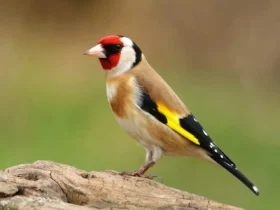The Australian King Parrot (Alisterus scapularis) is one of the most beautiful bird species in the world. It is a stunning avian species that showcases the natural beauty of the Land Down Under. Join us on a journey to explore the enchanting world of the Australian King Parrot and discover the wonders it brings to the Australian landscape.
Australian King Parrot images




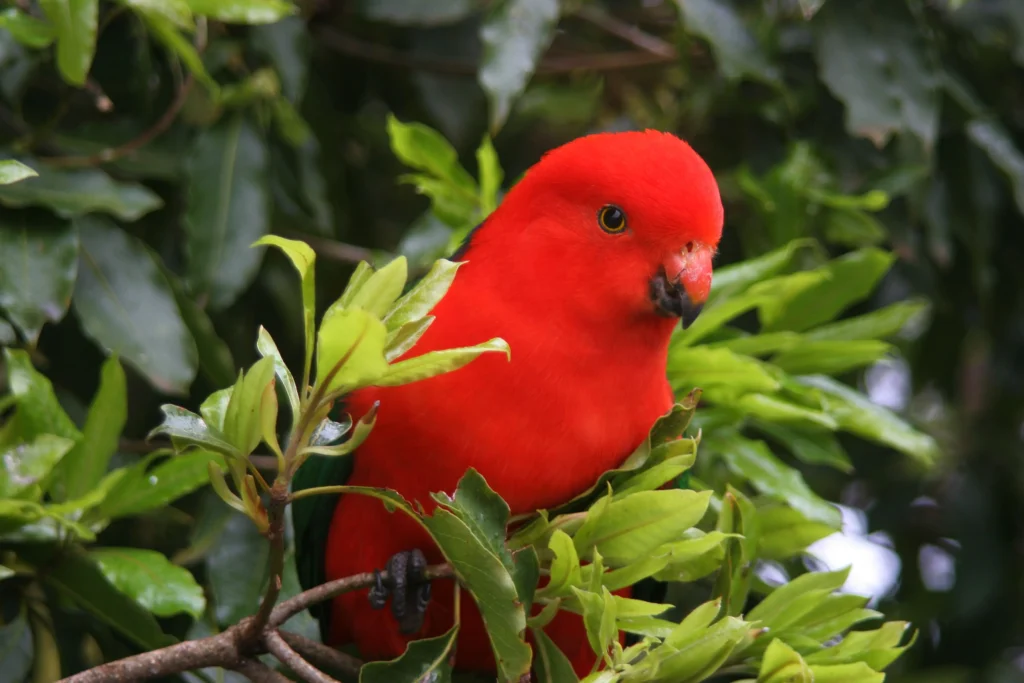

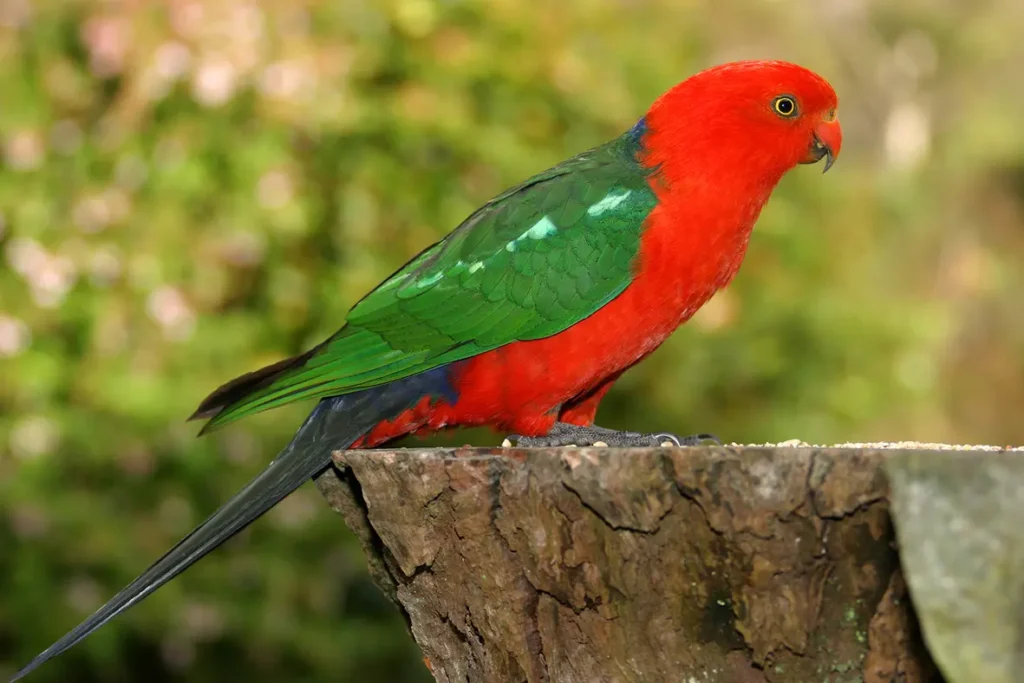


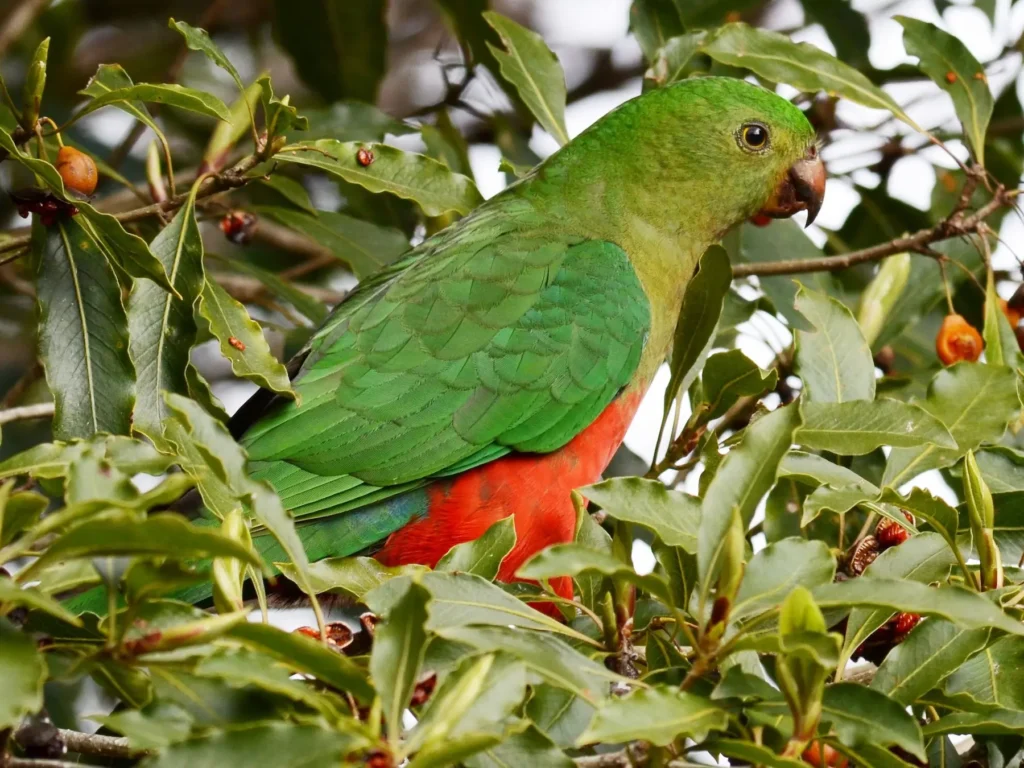
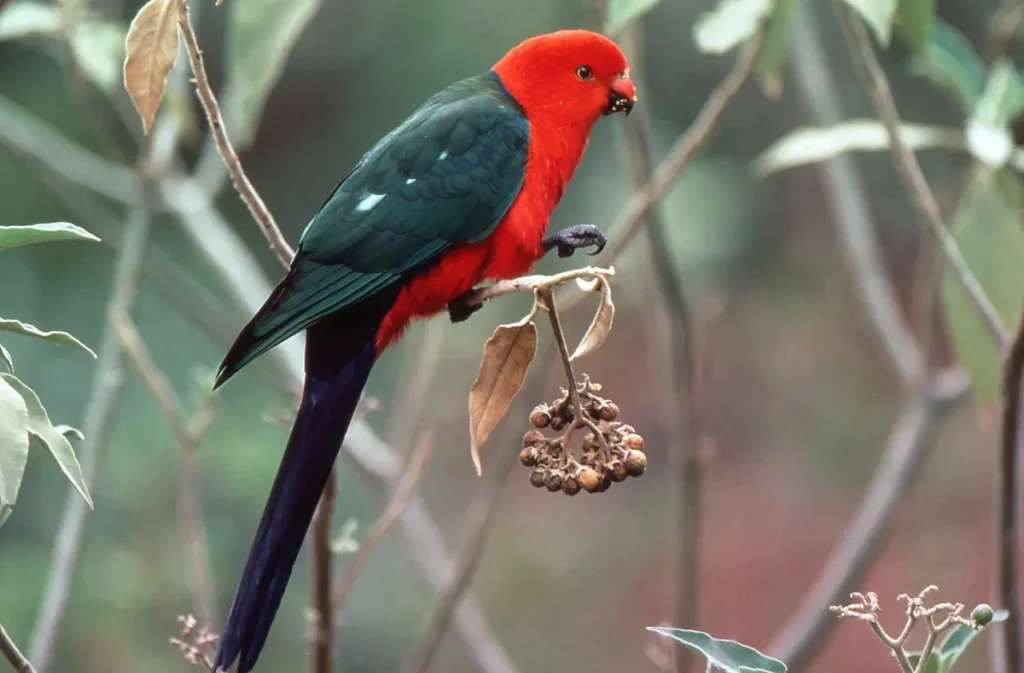


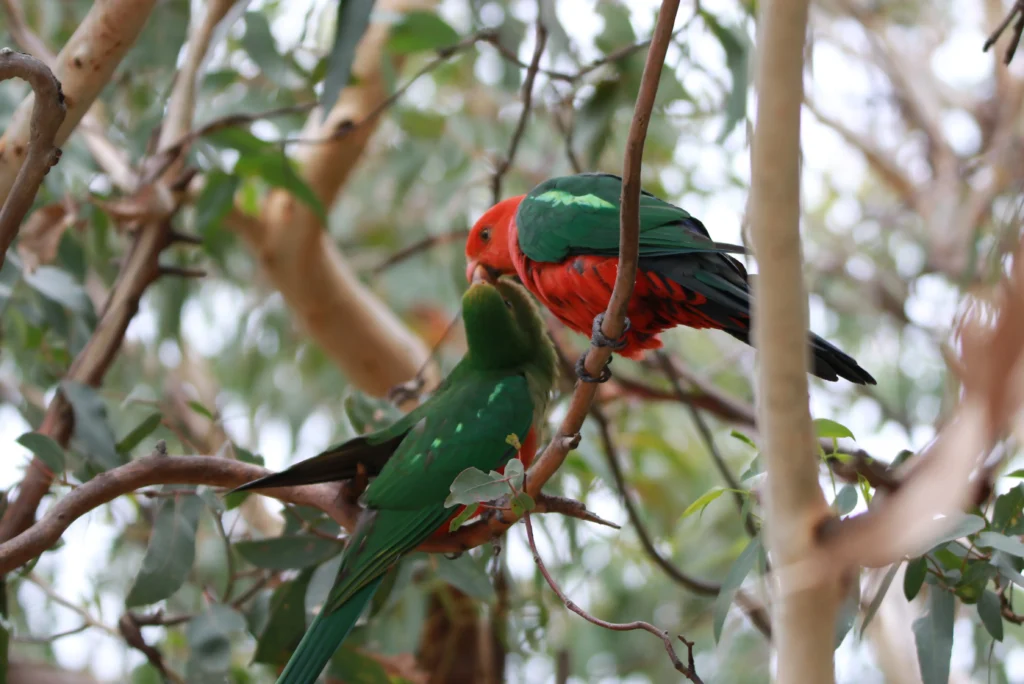




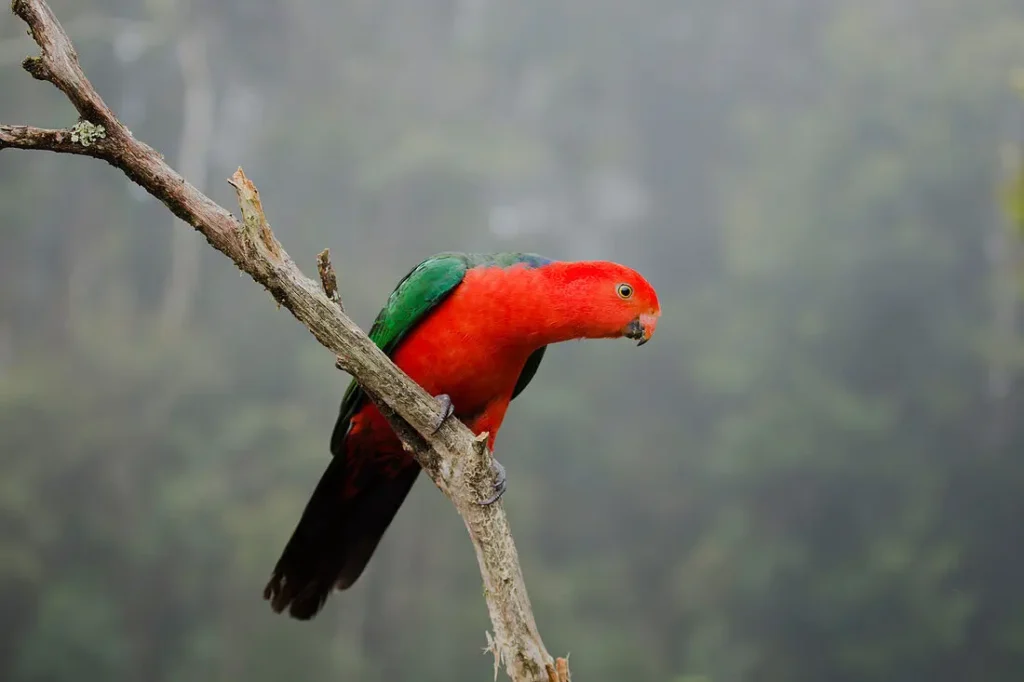
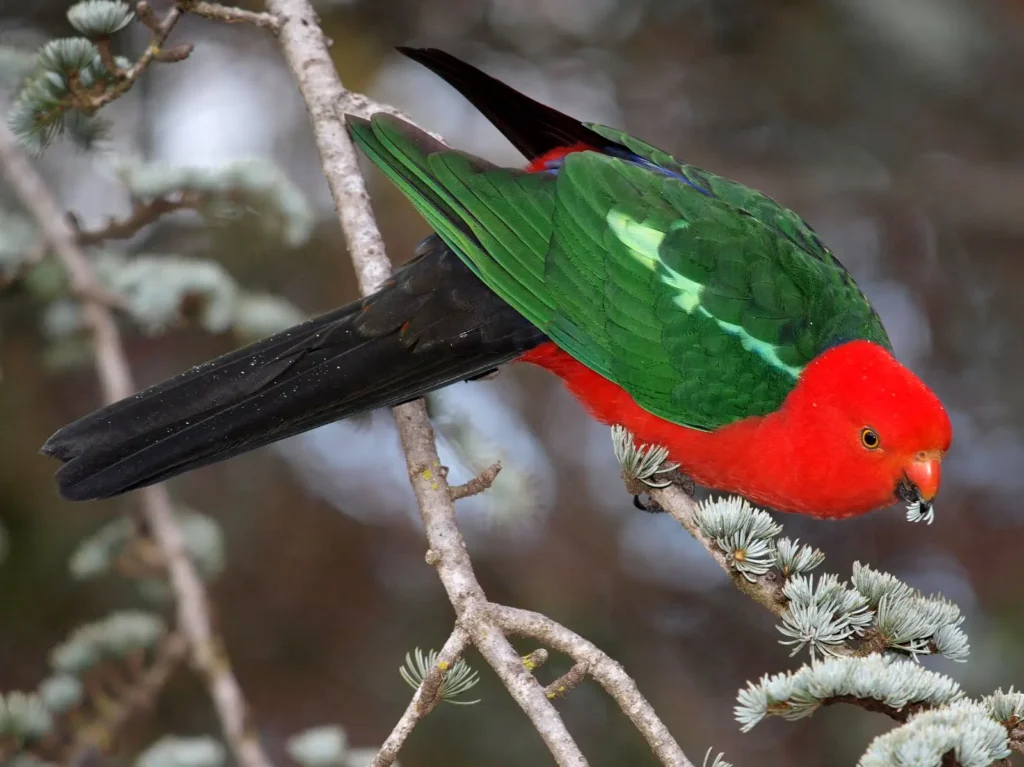
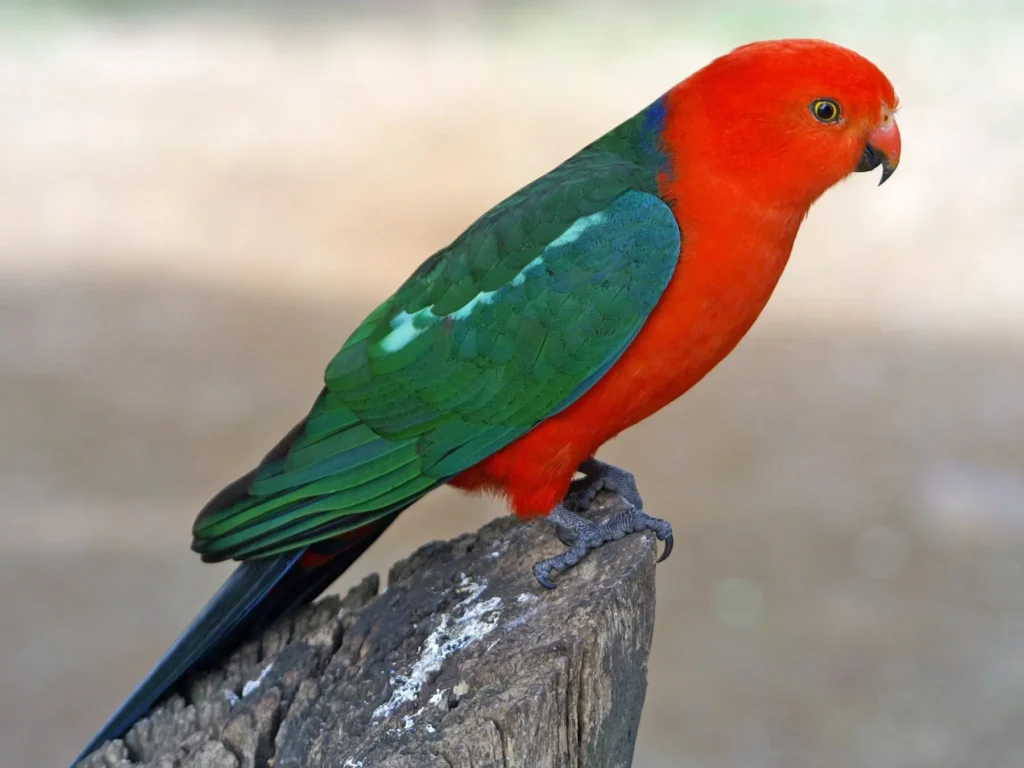
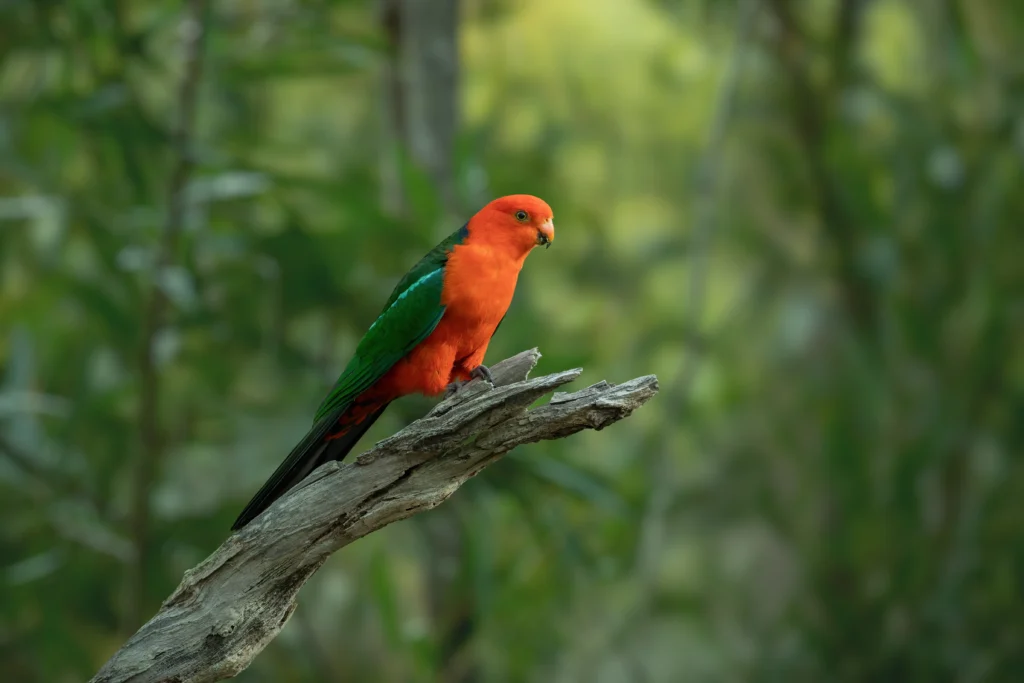
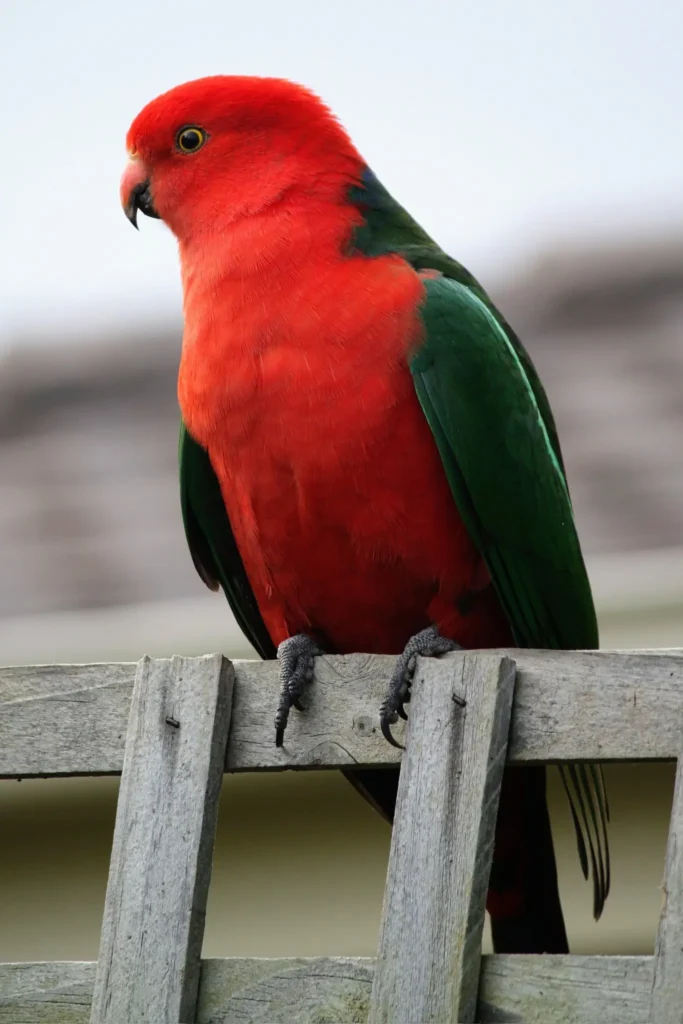


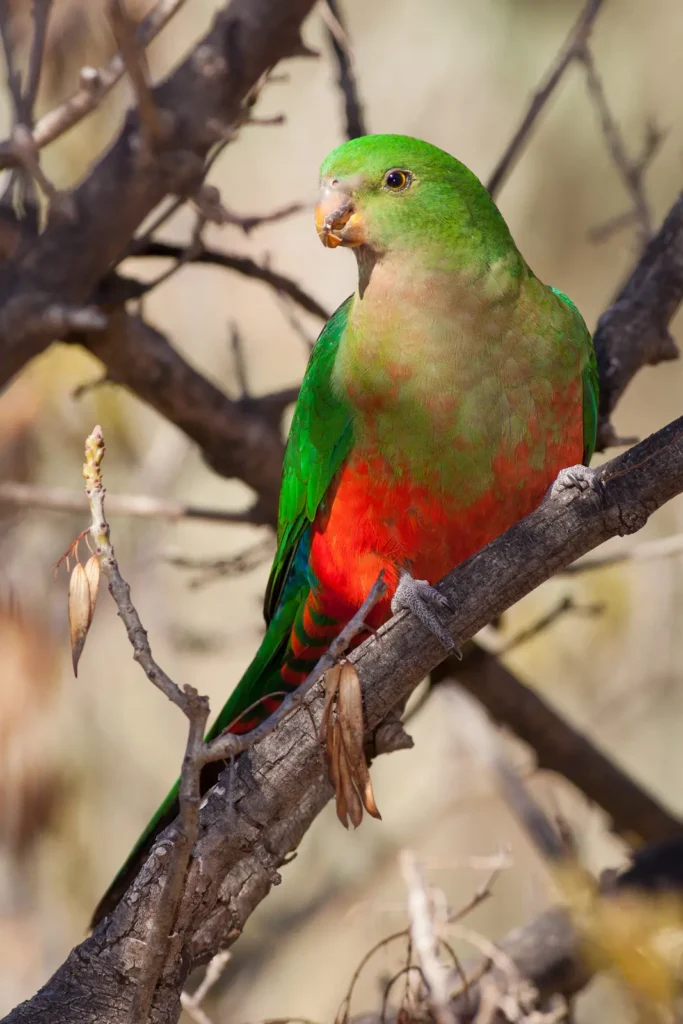


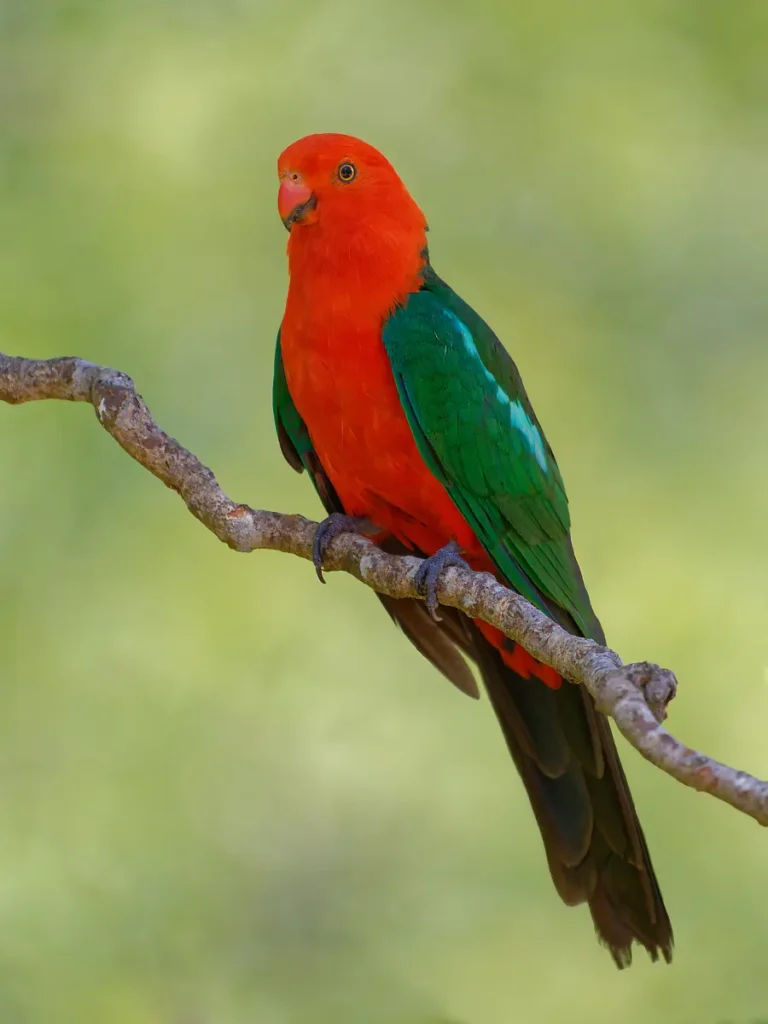
The Australian King Parrot is a medium-sized parrot known for its striking plumage and distinctive appearance. The males exhibit vibrant colors that make them stand out in any forest setting. Their heads are adorned with a deep scarlet crown that extends down their backs, contrasting beautifully with their emerald-green wings and tail. The females, on the other hand, display a more subtle yet equally captivating combination of green and red, with a touch of blue on their wings. Together, these colors create a visual masterpiece that truly reflects the natural splendor of Australia.
Native to the eastern regions of Australia, the Australian King Parrot inhabits a variety of forested habitats, including rainforests, eucalyptus woodlands, and coastal forests. These birds are highly adaptable and can be found in both rural and urban areas, often venturing into parks and gardens in search of food. Their diet consists primarily of seeds, fruits, flowers, and various plant materials, making them important seed dispersers and contributors to the ecosystem.
One of the most captivating features of the Australian King Parrot is its melodious voice. The males emit a distinctive call, a mix of whistles, squawks, and chattering, that resonates through the forest. These calls serve multiple purposes, including territorial defense, communication within the flock, and courtship displays. During breeding season, the males engage in elaborate courtship rituals, showcasing their vibrant colors and performing aerial displays to attract the attention of females.
Breeding among Australian King Parrots usually takes place from August to January. The females carefully select suitable nesting sites in tree hollows, where they lay a clutch of 2-6 eggs. Both parents take turns incubating the eggs and caring for the chicks. Once hatched, the young parrots are raised in the safety of the nest, where they are fed a diet rich in regurgitated food by their devoted parents. This nurturing process ensures the survival and growth of the next generation of Australian King Parrots.
Conservation efforts are crucial to safeguard the future of the Australian King Parrot and its habitat. While the species is not currently considered endangered, deforestation, habitat loss, and introduced predators pose threats to its population. Preserving and restoring native forests, protecting nesting sites, and promoting responsible land management practices are essential for the long-term survival of these magnificent birds.
Encountering an Australian King Parrot in the wild is a remarkable experience that leaves a lasting impression. Their vibrant colors, captivating calls, and graceful flight inspire a sense of awe and admiration for Australia’s rich biodiversity. By appreciating and conserving the Australian King Parrot and its habitat, we contribute to the preservation of Australia’s natural heritage and ensure that future generations can continue to admire the majestic beauty of this iconic bird.
